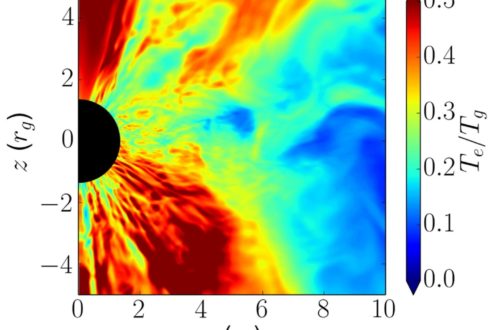May 2021 marks a significant milestone in planetary exploration, when China’s spacecraft Tianwen-1 softly landed on the surface of Mars, and deployed the rover Zhurong. The complete success of China’s first interplanetary mission makes China the third country landing on Mars (after the Soviet Union and the United States), the second country releasing a Martian rover (after the US), and the first country that achieved orbiting, landing and roving in the first mission to Mars.
“Tianwen (天问)” is the name of China’s upcoming series of planetary missions. The name means “questions to heaven”, taken from the long classical poem written by the ancient Chinese poet Qu Yuan. The poem conveys the pursuit of truth by the Chinese nation, especially the sentence “What do the Sun and the Moon belong to, where are the stars displayed (日月安属,列星安陈)” embodies our curiosity about the Universe. The rover’s name “Zhurong (祝融)” is adopted from the god of fire in Chinese mythology, perfectly matching its destination Mars, the planet of fire.
Tianwen-1, composed of an orbiter, a lander and the Zhurong rover, with a total mass of roughly five tons, is the heaviest spacecraft to date landed on Mars. On 23 July 2020, Tianwen-1 was launched from the Wenchang Spacecraft Launch Site (Hainan province) on a Long March 5 heavy-lift launch vehicle. It took seven months for the spacecraft to travel on the transfer orbit, until being captured by the gravitational field of Mars on 10 February 2021. The orbiter spent the following three months on the Mars orbit scanning the surface of Mars and preparing for landing. On 15 May 2021, the lander carrying the rover was separated from the orbiter and successfully landed in the target area in the southern Utopia Planitia. On 22 May 2021, the Zhurong rover descended from the lander and started its first drive on Martian soil.

The spacecraft carries 13 payloads of scientific instruments. The orbiter is equipped with 7 instruments: Medium-Resolution Camera, High-Resolution Camera, Orbiter Subsurface Radar, Mars Mineralogy Spectrometer, Mars Magnetometer, Mars Ion and Neutral Particle Analyzer, and Mars Energetic Particle Analyzer. The rover is equipped with 6 instruments: Mars Surface Compound Detector, Multi-Spectrum Camera, Navigation and Topography Camera, Ground-Penetrating Radar, Mars Surface Magnetic Field Detector, and Mars Meteorological Measurement Instrument.
The Tianwen-1 mission has three major scientific goals: detecting life activities on Mars; studying the evolution of Mars and comparing with other terrestrial planets; exploring the long-term reformation of Martian environment and the prospects of establishing a second human habitat in the future. There are five specific scientific objectives to investigate: morphology and geological structures of Mars; surface soil characteristics and water-ice distribution of Mars; surface material composition of Mars; Martian atmosphere(in particular ionosphere), along with the climate and environment at the surface; physical fields and internal structure of Mars.




